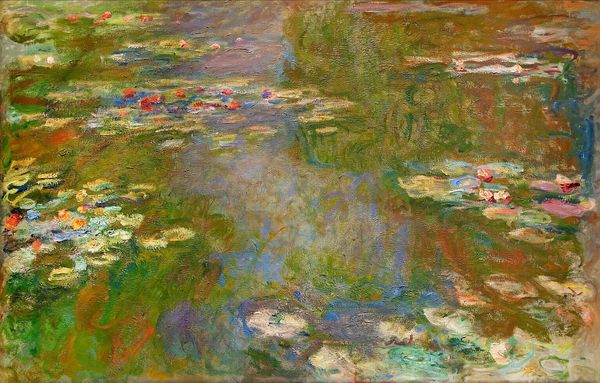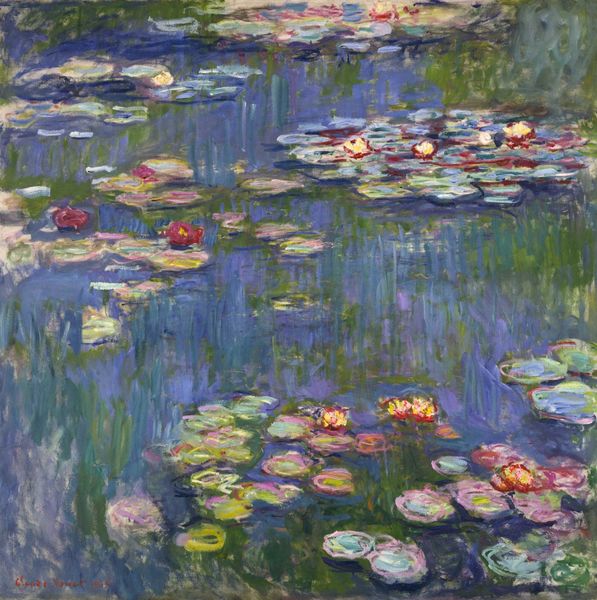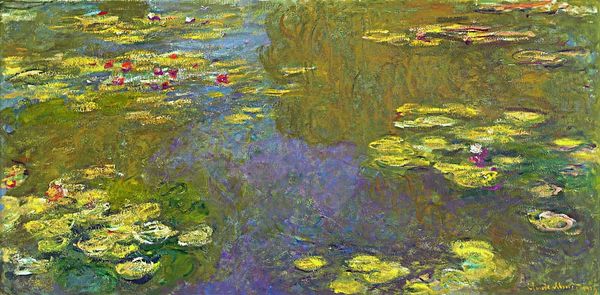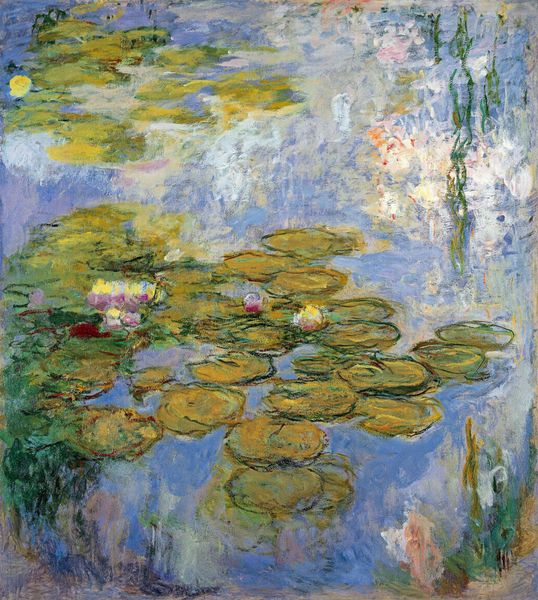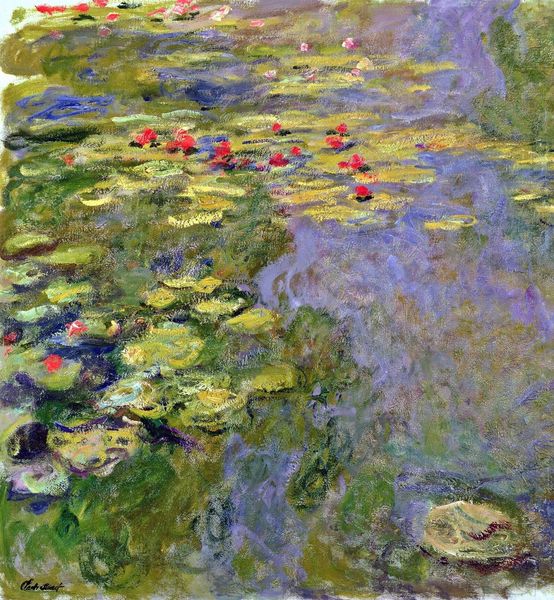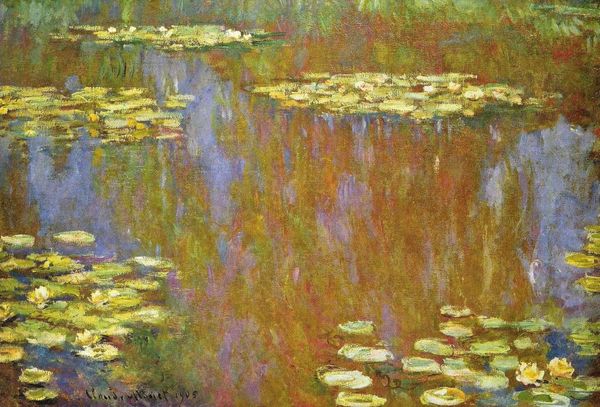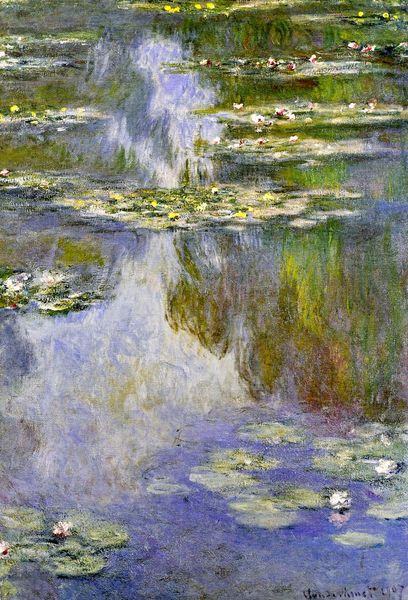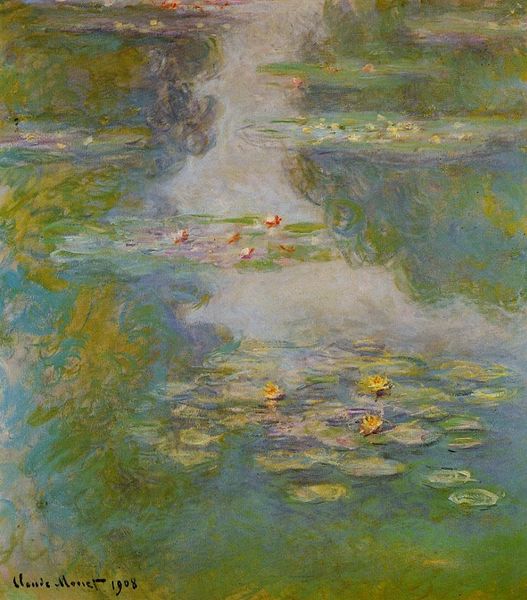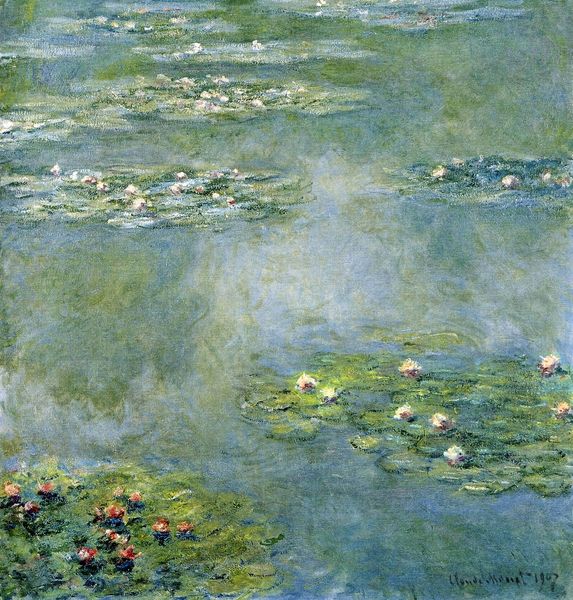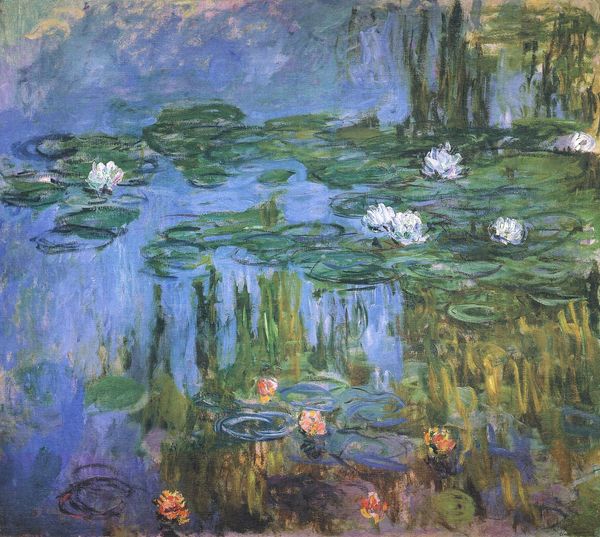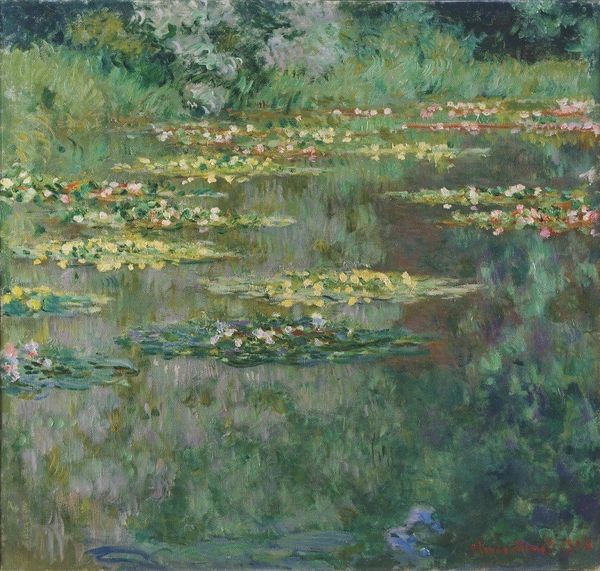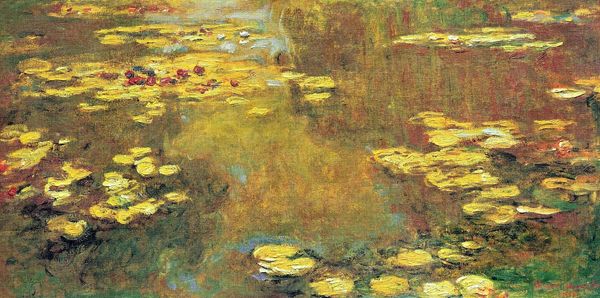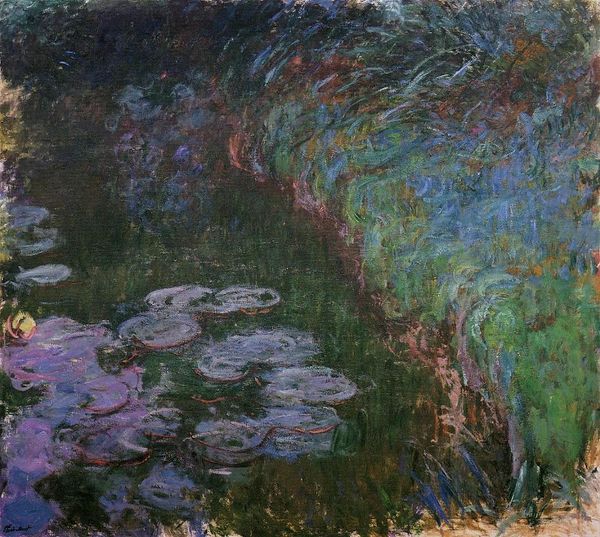
Copyright: Public domain
Editor: Here we have Claude Monet's "Water Lilies" from 1919, created using oil paints. The colors are very muted, but it gives me this serene, dreamlike feeling. What do you see in this piece? Curator: For me, this isn't just about dreamy serenity. Think about the materiality of the paint itself. Look at how Monet applied it, thick impasto in some areas, thin washes in others. What kind of labor went into producing those oil paints? Where did those pigments come from? Were they naturally sourced or mass-produced? It affects the cost of production, its accessibility, and thus, who gets to participate in both its making and consumption. Editor: That's an interesting angle! I was focusing on the lilies and the water, but I guess I didn't really consider what went *into* making the painting. Curator: Exactly! And beyond just the literal materials, think about the social context. Post-Impressionism was a reaction against industrialization, in a way. Monet's garden at Giverny, the very subject of this painting, was a cultivated landscape, an escape, but even that idyllic scene relied on labor – the gardeners who maintained it, the economic systems that allowed him to acquire and upkeep the estate. He benefited from industrialization even as his art sought to represent the beauty of the natural world, setting up an intrinsic paradox. Editor: So, the materials, the process, and the socio-economic circumstances… all of that is vital to understanding "Water Lilies." It definitely complicates the surface beauty of the work. Curator: Precisely! The "Water Lilies" series shows that beauty isn't simply apprehended; it's manufactured and maintained and reliant on a network of social and material conditions. Editor: This has really changed how I’ll look at paintings now. Thanks for broadening my perspective. Curator: My pleasure! It is always worthwhile to consider where these artworks really come from.
Comments
No comments
Be the first to comment and join the conversation on the ultimate creative platform.
